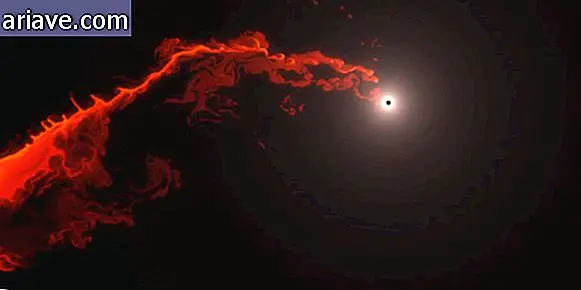Something moved one of Saturn's rings - and not so long ago
NASA scientists have recently discovered that something has moved one of Saturn's rings. The information was obtained through the Cassini spacecraft, which clearly showed a change in the hitherto "perfect" design of the planet's F ring which is known as "The Jewel of the Solar System".
Saturn's rings vary greatly in size and come in a variety of colors ranging from light pink to shades of gray to brown - something even compared by NASA itself to a cool painting by an artist. They are made up of trillions of dust, rock and ice particles that orbit the star at different speeds, which can reach thousands of kilometers per hour.
Some of these particles may be the size of a grain of sand, while others may be as large as mountains here on Earth. The F ring, in particular, is the outermost of the set and showed a blur in its outline:

It is one of the most active rings in the solar system, as scientists can keep up with changes in its appearance in a matter of hours. The last event, however, did not have a certain origin. There is speculation that some residue inside has been "removed".
John Weiss, one of the researchers involved, explained: "There is evidence that there are many of these bodies inside the ring, but you can't see them from the dust. But they are there, and every so often they end up crash into other debris and scatter many particles out ".
This collision is called by the scientists "jet". Astronomers believe jets are formed by the gravitational force of a tiny moon on Saturn called Prometheus.

She acts as a "cosmic shepherd, " carving the F ring while orbiting the planet. However, since its route is not perfectly circular, the force is not constant and can create some clumps of rocks and other larger objects that end up being hit by other bodies and creating the jets.
The collision here seems to have happened quite recently for astronomical parameters: the picture was taken on April 8 and scientists believe the jet happened the day before. In the two months that followed, the "wound" had returned to normal.











